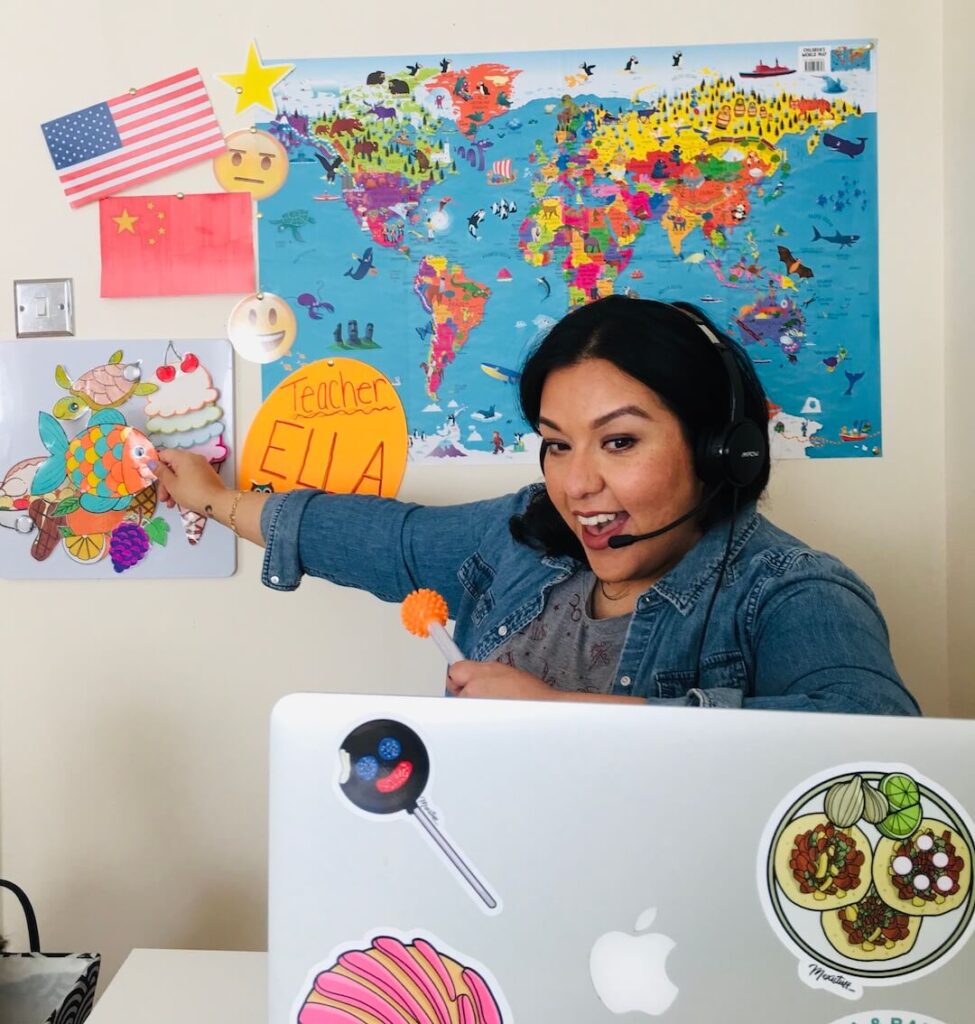Before you put those PowerPoint slides onscreen or break out the worksheets in your next English class, have you checked how your students feel about taking the day’s lesson? There are numerous ways to connect with students, be it high-fives or special greetings. Even so, finding ways to make students feel comfortable and engaged in lesson content can be challenging. Here, we break down some fail-safe ways for how to build rapport with ESL students!
If you’re new to teaching, you’ll want to get initial training and qualification with a TEFL certificate. You can explore our online TEFL courses to get started today.
What does rapport in ESL/EFL education mean?
Rapport refers to a comfortable and harmonious relationship between the teacher and the students. It is the result of being able to “click” with your students – you connect, interact, and understand each other in a positive way.
Rapport-building, however, is not just about finding common interests and values. It goes as far as creating trust and respect between you and your students, no matter how big your age gap or where you’re from.

Why is it important to build relationships with English students?
A good rapport with ESL students is the key to creating a positive and supportive online or physical classroom environment. In effect, the learning process is enhanced because:
Students feel more comfortable in class
Most first-time ESL students have very little idea of what to expect from their class or teacher. They also often feel anxious and shy about speaking in English for fear of sounding silly or being misunderstood. Nevertheless, it’s possible to reduce these jitters if you can quickly connect with your students.
Learners become more motivated to participate
Have you ever admired an educator who didn’t seem to have problems making students talk or take part in any activity, and who could even make them laugh? This kind of teacher has a friendly rapport with his or her students. The more connected you are with your ESL students, the more they will respond and participate in class.
Students keep coming back for more
While students may not tell you, “You’re the best teacher ever!” you’ll know that they have a good rapport with you when they regularly show up and make an effort to be in your class, despite their busy schedules.
How do you build rapport with your ESL students?
Now that we know that it’s important to build rapport in the English language classroom to support students in becoming more comfortable, confident learners who are enthusiastic about attending class, let’s look at ways you can encourage these strong relationships with students in a variety of ESL settings.

1. Smile and be energetic!
Receiving your students with a cheerful welcome instantly creates a positive learning environment. As a teacher, your vibe easily channels to your learners, so make sure that you’re enthusiastic and motivating!
2. Incorporate fun icebreakers and other activities.
When it comes down to how to build rapport with ESL students, nothing knocks out a nervous feeling and awkward silence in class better than a good ESL icebreaker! It doesn’t have to be elaborate – it could be as simple as a “Two Truths and a Lie” activity. (Find this and other games here: 10 Easy ESL Icebreakers).
Additionally, students may show up to class tired or anxious, so it’s always a good idea to perk them up with a fun game. If you’re teaching a group class, make it more entertaining through competitive games. Yes, your ESL student’s learning is important, but don’t forget to prioritize fun in class too!
Learn more about teaching group vs. individual online English classes.
3. Learn about your learners.
Whether it’s about their favorite pop group or their last beach trip, don’t be afraid to ask questions about your students’ lives outside the classroom to find out more about them. Be genuinely curious about their interests and activities. Who knows, you might spark a fun conversation about your shared love for surfing or travel!
Also, pay attention to important information that you can ask them about in future lessons, like birthdays or new additions to the family. Since these details can easily slip your mind, it’s helpful to write them down during or after your class.
- Pro Tip: Instead of simply chatting with your student, you can also learn more about him or her through engaging get-to-know-you activities like “20 Questions” or “Find Someone Who.”
4. Let your students get to know you back.
Just as you want to hear about your students’ lives, they similarly would love to know about the music you listen to or what it’s like where you live or grew up. Share your story with them, show some photos of your family, or play a couple of songs that you like.

Let your personality shine through, too! Don’t be shy about making jokes in class, laughing, or even being goofy in front of students. This way, they can see you as a real human being and not just someone teaching them a language.
- Pro Tip: Let your students know more about your life through guessing games! For example, you can show them photos from your past vacations and make them guess where you went or who you were with!
5. Praise your students often.
It’s not uncommon for language learners’ confidence to drop over the slightest mistakes, like in pronunciation or vocabulary usage, but you can easily boost their confidence during the class through specific, positive feedback. Compliment them for their achievements in class, whether they’re as small as saying a word correctly or as big as being an expert in a difficult grammar tense.
6. Show empathy.
If you’ve noticed that your learners seem to have had a hard day or are distracted by something, take a minute to ask them how they feel. Your students will appreciate it, even if you just listen and show concern. Connecting on a personal level will go a long way to building rapport with ESL students.
7. Tailor your lessons.
Whether you’ve known your students for a while or are still getting to know them, you can personalize the class content according to their interests and personalities. For example, if your student is into winter sports, why not show him some of the best ski resorts around the world? Or, maybe you remember your other student’s upcoming trip to Asia – why not create a lesson around the best things to do there? You can also look for places within any lesson you’re teaching where you can segue into a topic or an activity that could be interesting for them.
In this video, from Bridge’s Specialized Certification in Teaching English Online course, you can check out some sample questions you can ask new students to get to know them better:
8. Help students outside of the classroom.
Don’t limit your teaching abilities to the class hours you’ve chosen. A student may suddenly have doubts about a presentation in English that she’s about to give to her colleagues at work, or another may struggle with writing a corporate email, for instance. Build rapport when teaching ESL students by letting them know that they can reach out to you if they ever need help with any English-related tasks.
It may require patience, some effort, and a willingness to be a lifelong learner to build rapport with your ESL students, but the reward of seeing your students happy and engaged will give you the best feeling any teacher could have.












